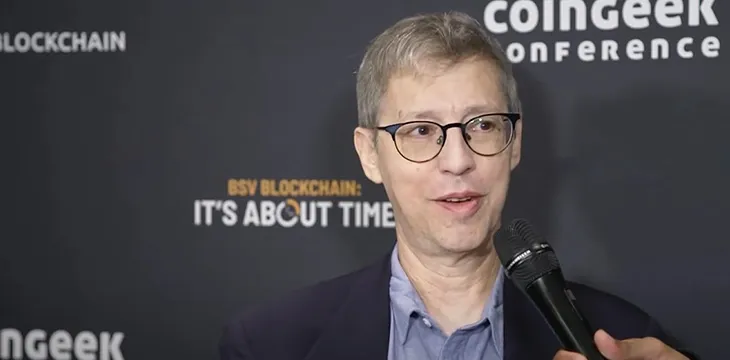|
Getting your Trinity Audio player ready...
|
One of the sought-after panel discussions on Day 1 of the CoinGeek Conference in New York features blockchain pioneers W. Scott Stornetta and Stuart Haber, financial cryptographer Ian Grigg, and Dr. Craig Wright. They discussed their earlier works on verifying digital information inspired by Satoshi Nakamoto’s invention in the panel titled, “Blockchain: The Future of Technology Building on Achievements of the Past.”
Haber, whose work with Stornetta was cited three times in the footnotes of the 2008 Bitcoin white paper, spoke with CoinGeek Backstage host Patrick Thompson on the sidelines of the event to explain how the idea of blockchain technology was made, how it evolved, and its importance in today’s society.
During the interview, Haber looked back on when he and Stornetta wrote their academic paper, “How to time-stamp a digital document.” Haber said that back then, they set out to ensure the integrity of digital records and of the human history and “the way [they] did it was by coming up with the data structure, the mechanism that’s ensuring the integrity of most records in most blockchain systems.” He noted, however, that they might not be doing it right then.
When asked if he was surprised to see the evolution of blockchain technology as a sort of digital currency today compared to their original idea, Haber said they did not intend their invention to be used specifically for financial systems, but to ensure the integrity of any records. He explained, “A digital document is just a string of bits. It could be an email message, a financial transaction, a lab notebook entry, anything at all.”
He also said it took a while to see the “real widespread worldwide” of the technology, which wasn’t called “blockchain” at the time. Haber said it was exciting to see the explosion of interest in blockchain, “not only social and political interests, but also technical innovations.”
What are the use cases that blockchain technology can offer in other industries? According to Haber, “If by blockchain you mean the integrity mechanism that Satoshi chose to build into Bitcoin. That integrity mechanism, if you call it the blockchain, that’s the right way to ensure the integrity of any records. It could be used for anything.”
Although the blockchain hype has “led to proposals for all kinds of silly uses, Haber is keeping an open mind that someone who attended the CoinGeek New York conference could bring up unique ideas by next month that could mean something completely new.
Thompson wrapped up the interview by asking what’s the best general takeaway Haber wanted the audience to know. In response, he invited the viewers “to use the blockchain systems as they are readily available now and think about what they’d wanted to do with it.”
Watch CoinGeek New York 2021 Day 1 here:
Watch CoinGeek New York 2021 Day 2 here:
Watch CoinGeek New York 2021 Day 3 here:

 07-02-2025
07-02-2025 





